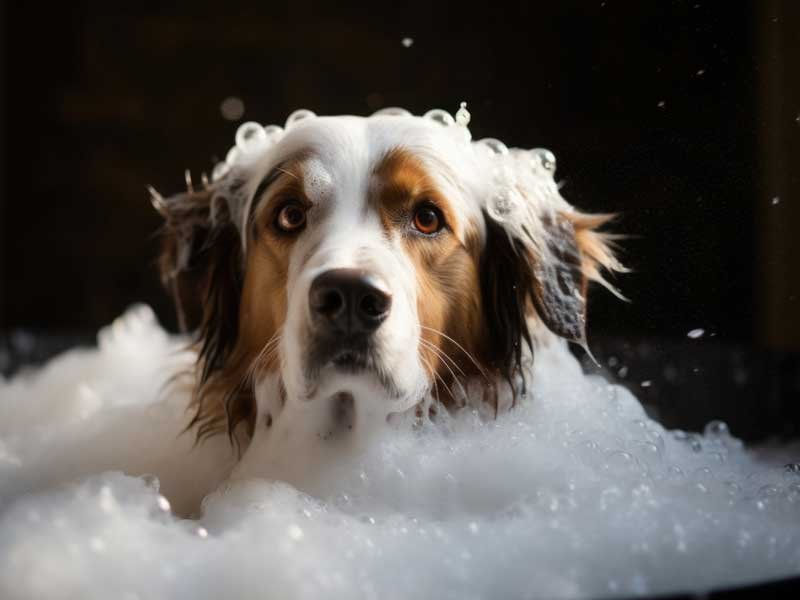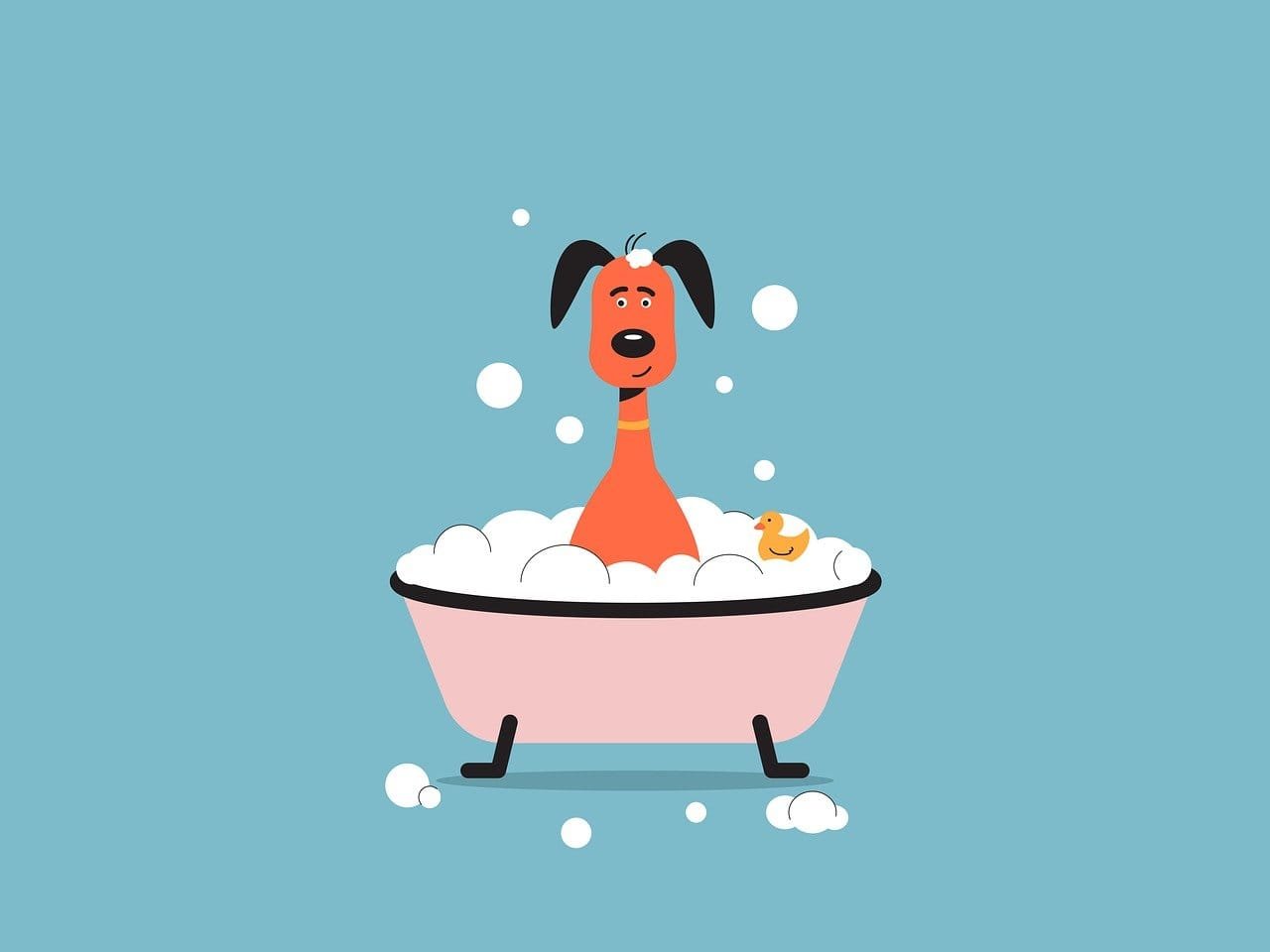What’s the Best Shampoo to Use for My Dog?
What’s the best shampoo to use for your dog? It’s a question many pet owners ponder. Finding the right shampoo can make all the difference in keeping your furry friend clean, comfortable, and healthy. Let’s embark on a journey to discover what factors you should consider when selecting shampoo for your dog, the types available, and how to use them effectively.
Why Is Dog Shampoo Different from Human Shampoo?
You may wonder why it’s essential to use pet-specific shampoos instead of your regular shampoo. The primary reason lies in the differences in pH levels between human skin and canine skin.
Human skin typically has a pH level around 5.5, while a dog’s skin is closer to 7.5 to 8.5. Using human shampoo can disrupt the natural balance of your dog’s skin, leading to irritation, dryness, and even more severe dermatological issues. It’s crucial to choose a shampoo formulated specifically for dogs to ensure their unique skin health is maintained and nurtured.
Factors to Consider When Choosing Dog Shampoo
When selecting the best shampoo for your dog, it’s essential to consider several factors. These will help guide you toward a suitable choice that addresses your dog’s specific needs and preferences.
Dog’s Coat Type
The first thing to think about is your dog’s coat type. Different breeds have different fur textures and requirements.
- Short-Haired Dogs: Dogs like Beagles or Boxers may benefit from a basic cleansing shampoo that focuses on removing dirt and odor.
- Long-Haired Dogs: Breeds like Afghan Hounds or Yorkshire Terriers often require shampoos with moisturizing properties to keep their coats tangle-free and healthy.
Skin Sensitivities
If your dog has allergies or skin sensitivities, this is a crucial factor to keep in mind. Some shampoos might contain fragrances or preservatives that can irritate sensitive skin.
- Hypoallergenic Shampoos: For dogs that are prone to allergic reactions, hypoallergenic shampoos are designed to minimize irritation.
- Natural Ingredients: Look for shampoos with natural ingredients like oatmeal, aloe vera, and chamomile, known for their soothing properties.
Health Conditions
Some dogs might have specific health conditions that require specialized shampoo.
- Flea or Tick Treatment: If your dog frequently battles fleas and ticks, consider a medicated shampoo that targets these parasites directly.
- Seborrhea or Dermatitis: If your dog has been diagnosed with skin conditions, you might require veterinary-approved medicated shampoos that contain ingredients like benzoyl peroxide or salicylic acid.
Types of Dog Shampoos to Consider
As you dive deeper into your options, you’ll come across several types of dog shampoos. Knowing which one suits your dog can be beneficial.
Regular Dog Shampoo
Regular dog shampoos are perfect for routine grooming. They often come in various scents and are meant for general cleaning without any specific requirements.
| Pros | Cons |
|---|---|
| Easy to find | May not address specific skin issues |
| Affordable | Some formulas can be overly harsh |
| Variety of fragrances | May include synthetic ingredients |
Medicated Shampoos
Medicated shampoos are tailored for dogs with specific skin issues, helping with conditions like infections, allergies, and flaking.
| Pros | Cons |
|---|---|
| Addresses specific conditions | Usually more expensive |
| Provides immediate relief | Requires guidance from a vet |
Hypoallergenic Shampoos
These are formulated to reduce allergic reactions, making them ideal for sensitive dogs. Ingredients are kept minimal and natural.
| Pros | Cons |
|---|---|
| Gentle on skin | Limited scents |
| Safe for frequent use | May not clean as thoroughly |
Oatmeal Shampoos
Often recommended for dry or itchy skin, oatmeal shampoos can help soothe irritation and provide moisture to your dog’s coat.
| Pros | Cons |
|---|---|
| Soothe irritated skin | May require rinsing longer |
| Great for dry skin | Not as effective for dirt removal |
Flea and Tick Shampoos
If you’re dealing with a flea or tick problem, these shampoos contain pesticides to eliminate these pests on contact.
| Pros | Cons |
|---|---|
| Effective against pests | May contain harsh chemicals |
| Provides immediate relief | Requires careful usage to avoid skin irritation |
Ingredients to Look For in Dog Shampoo
When shopping for dog shampoo, familiarizing yourself with some common ingredients can guide your decision-making. Here are a few beneficial components to consider:
Natural Ingredients
- Oatmeal: Renowned for its soothing qualities, oatmeal is a staple in shampoos designed for sensitive skin.
- Aloe Vera: Known for its moisturizing and healing properties, aloe vera can help alleviate symptoms of dryness and irritation.
Essential Oils
- Lavender: Besides smelling delightful, lavender is often used for its calming properties.
- Tea Tree Oil: Known for its antiseptic qualities, tea tree oil can help keep skin infections at bay. However, ensure it’s diluted properly, as it’s toxic in large quantities.
Avoid Harmful Chemicals
Be mindful of ingredients that could harm your dog. Some components to steer clear of include:
- Parabens: Preservatives that can potentially disrupt hormone levels.
- Sulfates: These can strip natural oils from the skin and coat, leading to dryness and irritation.

How Often Should You Bathe Your Dog?
Determining the bathing frequency for your dog can depend on several factors, including breed, coat type, and activity level.
General Guidelines
- Short-Haired Breeds: Generally, bathing every 3 months is sufficient. However, if they get particularly dirty, feel free to adjust.
- Long-Haired Breeds: Regular grooming might lead you to bathe every 4 to 6 weeks to keep their coat healthy and prevent matting.
- Active Dogs: If your pup loves to play in the mud or swim, more frequent baths may be necessary.
Signs Your Dog Needs a Bath
If your dog begins to smell bad, appears dirty, or has a build-up of debris in their fur, it’s time for a wash. Keeping an eye on their coat’s condition can also guide you in knowing when a bath is due.
Bathing Tips for Your Dog
Bath time can sometimes be a struggle, but with a few strategies in place, it can become a more pleasant experience for both you and your dog.
Preparing for Bath Time
- Gather Supplies: Make sure you have all your bathing supplies ready, including shampoo, towels, and a brush.
- Choose the Right Location: Using a designated bathing area, whether it’s a bathtub or outdoor space, can make things easier. Ensure the area is secure to prevent escapes.
How to Bathe Your Dog
- Brush Before Bathing: Brushing removes loose fur and prevents matting.
- Wet the Coat: Use warm water and ensure your dog is thoroughly wet, avoiding eyes and ears.
- Apply Shampoo: Use a small amount of shampoo and work it into the coat, being mindful of sensitive areas like the face.
- Rinse Thoroughly: Make sure no shampoo is left behind, as residues can cause skin irritation.
- Dry Your Dog: Use a towel to dry them off, and consider a dog-friendly blow dryer on a low setting for long-haired breeds.
Post-Bath Care
After the bath, give your dog a gentle brush and reward them with praise or a treat. This practice can make them more comfortable with regular bath times in the future.
Common Dog Bathing Mistakes to Avoid
Even seasoned pet owners can make errors during bath time. Here are a few to watch out for:
Using Human Shampoo
As mentioned earlier, always stick to dog-specific shampoos to prevent disrupting the pH balance of your dog’s skin.
Over-bathing
Bathing your dog too frequently can lead to dry and irritated skin. Stick to the recommended intervals to maintain their coat’s natural oils.
Ignoring Sensitive Areas
Be cautious when washing around your dog’s eyes, ears, and nose. These areas need extra attention to avoid irritation and discomfort.
What to Do If Your Dog Has an Adverse Reaction
In rare instances, your dog may have an adverse reaction to a shampoo. Here’s how to handle it:
Signs of Adverse Reactions
- Increased scratching or biting at the skin
- Redness or rash on the skin
- Constant rubbing against surfaces
If you notice any of these signs after bathing your dog, it’s crucial to rinse their coat immediately, using lukewarm water, and seek advice from a veterinarian if symptoms persist.
When to Call the Vet
- If your dog’s symptoms worsen or don’t improve within a few hours after rinsing.
- If you notice signs of severe irritation like swelling, blistering, or excessive redness.
Conclusion
Choosing the right shampoo for your dog isn’t just about cleanliness; it’s also about their overall health and well-being. By considering your dog’s coat type, skin sensitivities, and specific needs, you can select a shampoo that keeps your furry friend comfortable and happy.
Take the time to educate yourself on the different types of shampoos available and the ingredients that will benefit your dog. Remember to maintain a consistent bathing routine that suits your dog’s lifestyle, and always be vigilant for signs of skin irritation. Your dog will thank you with wagging tails and plenty of cuddles!






